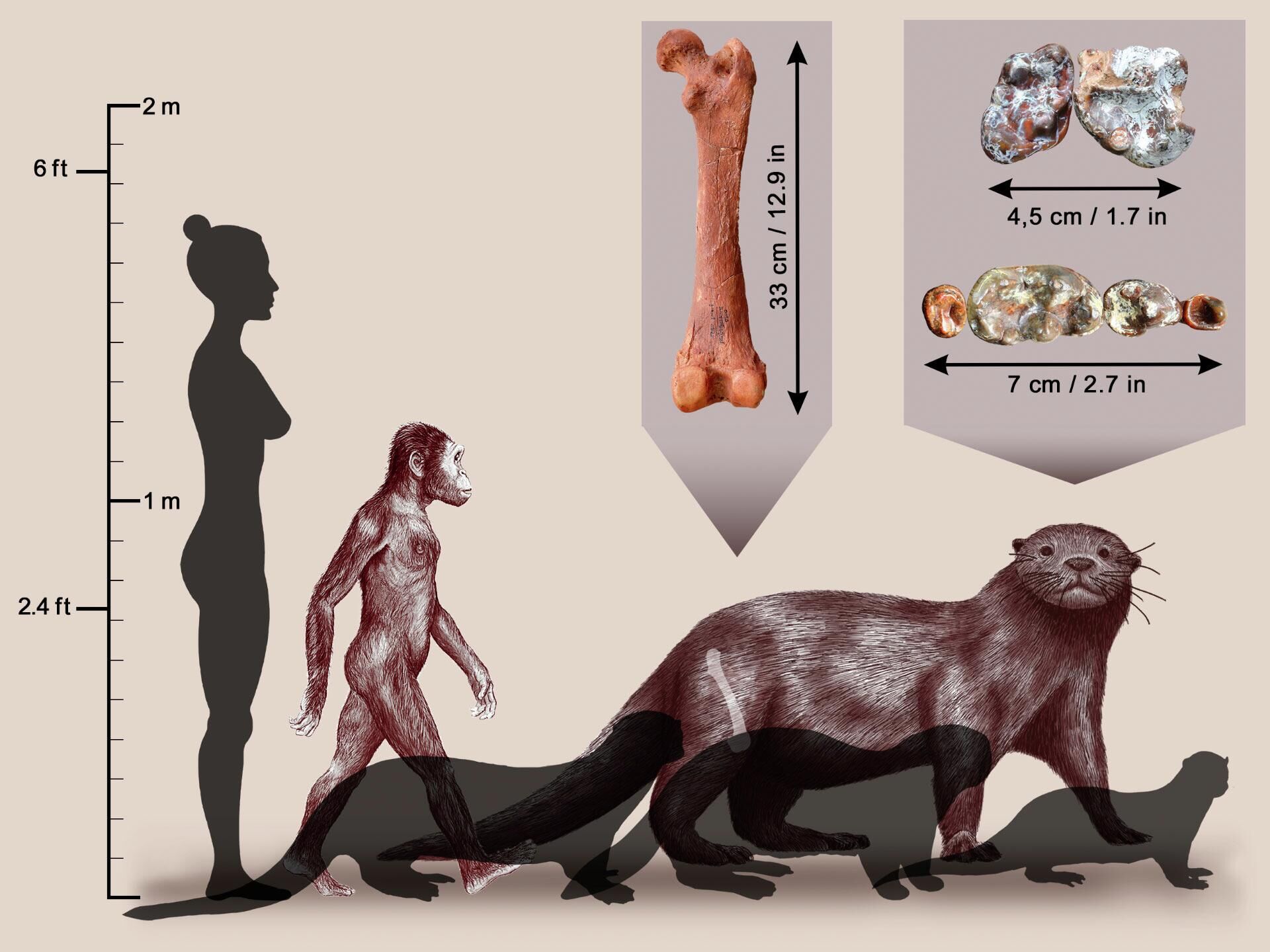Remains of Giant Otters Discovered in Ethiopia
14:22 GMT 14.09.2022 (Updated: 10:42 GMT 21.04.2023)

© Photo : Sabine Riffaut / Camille Grohé / Palevoprim / CNRS – Université de Poitiers
Subscribe
Scientists named the new species Enhydriodon omoensis in honor of the Lower Omo Valley in southwestern Ethiopia, where they found the remains of the animal.
Fossils of a giant otter that lived near early humans have been discovered in Ethiopia. The findings have been excavated for several years by several international paleontological expeditions, according to Live Science.
Giant otters lived in these parts from 3.5 to 2.5 million years ago and coexisted with ancient relatives of humans, Australopithecines.
Enhydriodon omoensis were colossal compared to modern otters. The giant otters could reach three meters in length and weigh from 150 to 250 kg. Their modern relatives are much smaller — they usually reach a maximum of 1.2 m in length and their weight is no more than 14 kg.

Reconstruction of Enhydriodon omoensis (in background), compared with three current species, left to right: the South American giant otter; the sea otter; and an African otter. An australopithecine and a modern human shown here for size comparison. The femur and dental remains of Enhydriodon omoensis are shown in insets
© Photo : Sabine Riffaut / Camille Grohé / Palevoprim / CNRS – Université de Poitiers.
The weight of an ancient otter was calculated on the basis of fossils of its teeth and femur. The researchers also examined the amount of stable oxygen and carbon in the tooth enamel to understand how much the species depended on water. Paleontologists believe the otter could eat land and water prey, hunt, and find carrion. However, the animal spent time mostly on land, not in the water.

